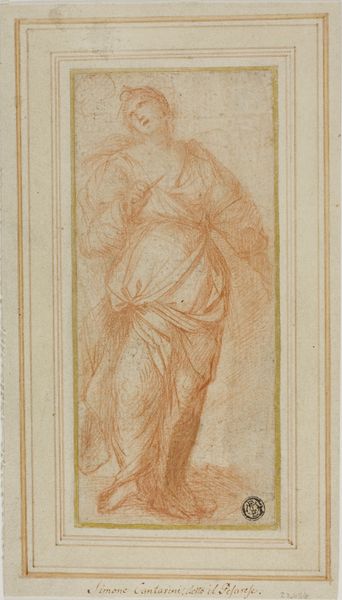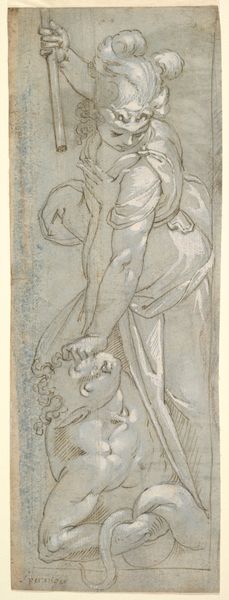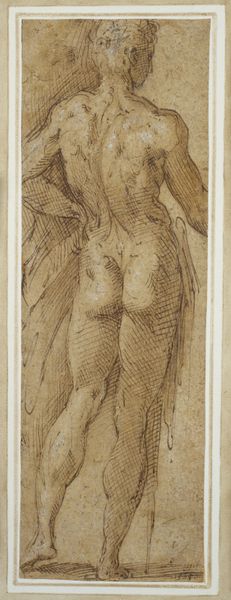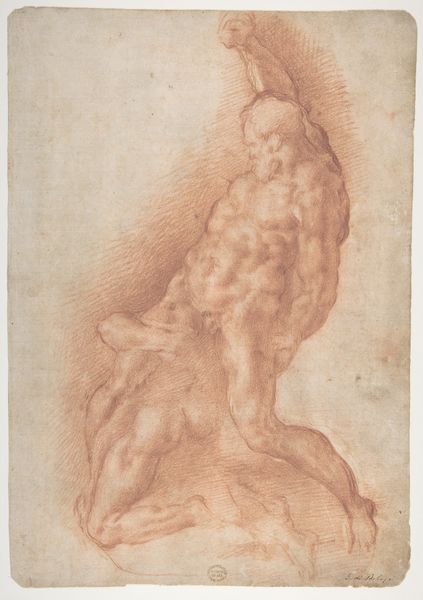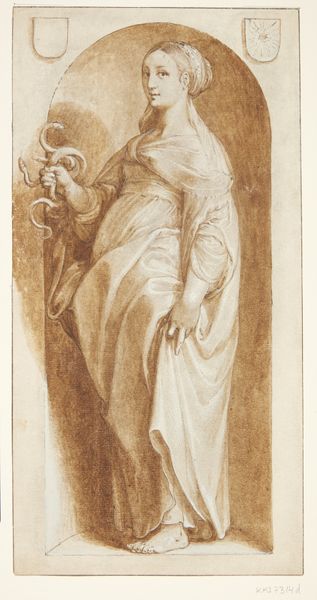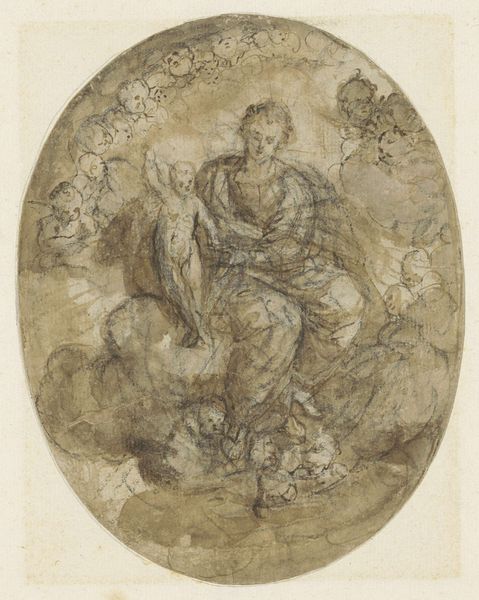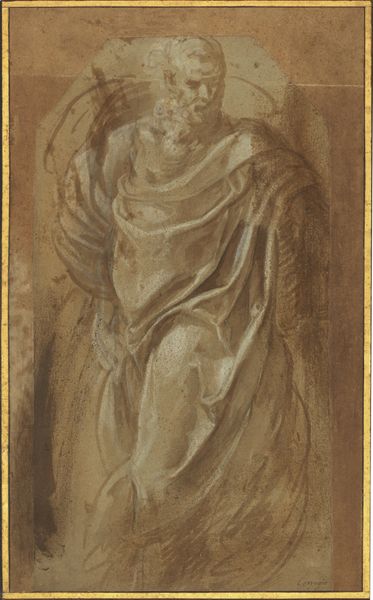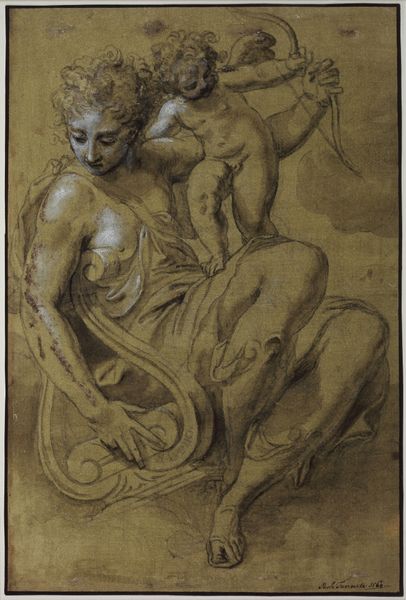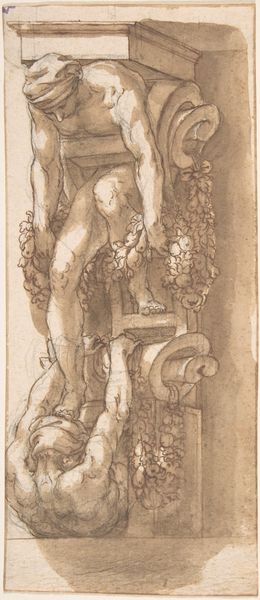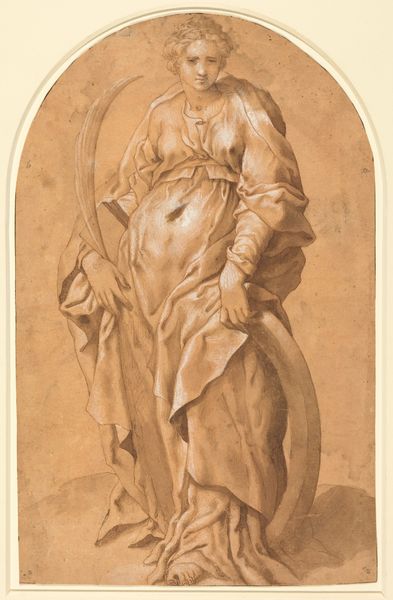
drawing, charcoal
#
drawing
#
allegory
#
charcoal drawing
#
figuration
#
11_renaissance
#
charcoal
#
charcoal
#
nude
Dimensions: 11 5/16 x 2 5/8 in. (28.73 x 6.67 cm) (sheet)22 3/4 x 16 3/4 in. (57.79 x 42.55 cm) (outer frame)
Copyright: Public Domain
Pellegrino Tibaldi rendered this drawing of ‘Pan’ in ink on paper. The vertical composition immediately draws the eye upwards, emphasizing Pan’s towering presence. The artist's manipulation of light and shadow across Pan’s muscular form gives it volume and tension. Notice the textural contrast between the smoothness of the skin and the roughness of the fur on Pan's legs, achieved through varied line work. This contrast serves not just an aesthetic purpose but challenges established meanings of beauty by blending human and animalistic traits. Tibaldi destabilizes the classical ideals that typically separate the civilized from the wild. The semiotic system at play uses the image of Pan, traditionally a symbol of nature and disorder, as a signifier. Here, it questions the values and categories set by Renaissance society. The drawing’s formal qualities and the themes explored are still relevant, inviting us to reconsider our own cultural constructs and aesthetic values.
Comments
minneapolisinstituteofart about 2 years ago
⋮
Pan, god of the wilderness, possessed physical traits of both man and goat, similar to satyrs. Pan is typically depicted with his pan pipes, which he fashioned out of hollow reeds when the object of his affections, the wood nymph Syrinx, transformed herself into a reed to escape her unwanted suitor. In ancient mythology, wind instruments like horns and flutes were associated with the wild and untamed, while string instruments like lutes and harps connoted civility.
Join the conversation
Join millions of artists and users on Artera today and experience the ultimate creative platform.
